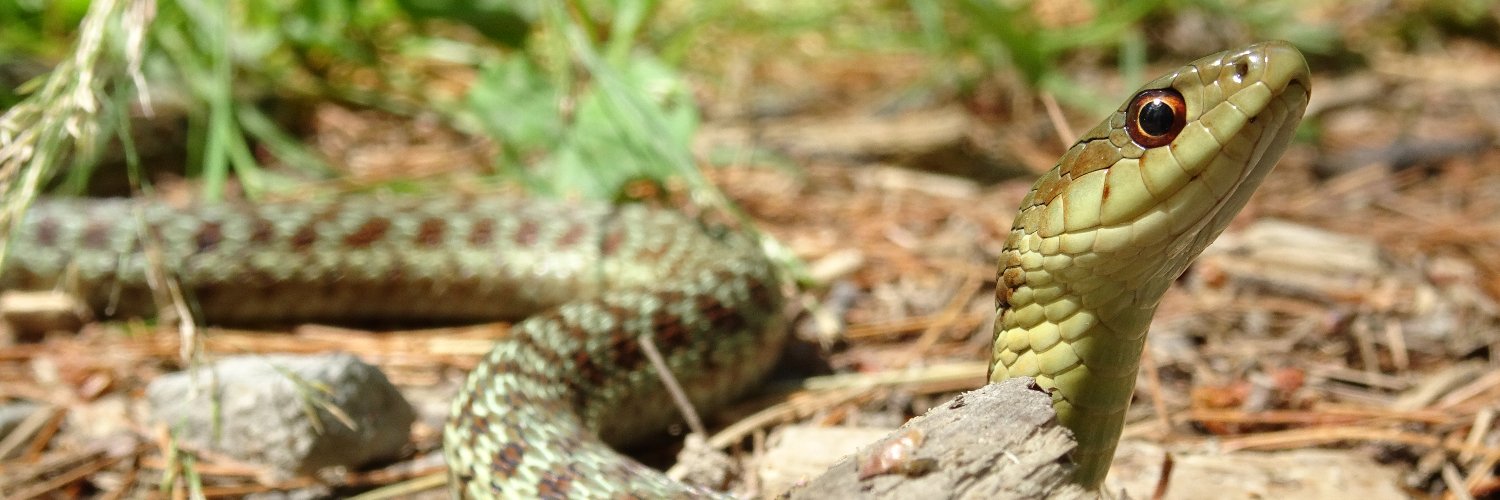
Martin Mayer
@eco_mayer
Interested in the #Ecology and #Conservation of #mammals, #amphibians and #reptiles. And really anything that moves...
Newly published in @ConLetters, @g_wardfear et al. unveil a unique conservation strategy: 'teacher toads' helping monitor lizards survive adult toad invasions. A creative twist in wildlife management! 🦎🐸 conbio.onlinelibrary.wiley.com/doi/full/10.11…
Check out our new paper on habitat selection by poison frogs 🐸🐸🐸
Our #OA paper on habitat selection in the dyeing #poisonfrog led by @eco_mayer (and with @LiaSchlippe) is out now in Global Ecology & Conservation! 👉🏽 doi.org/10.1016/j.gecc… Have a look at the thread in the post below for a summary of the main results 👇🏼
Check out Lia's beautiful cover painting on the new issue of Evolutionary Ecology! 🐸💚
Our #OA paper on habitat selection in the dyeing #poisonfrog led by @eco_mayer (and with @LiaSchlippe) is out now in Global Ecology & Conservation! 👉🏽 doi.org/10.1016/j.gecc… Have a look at the thread in the post below for a summary of the main results 👇🏼
Check out our new paper investigating the spatial ecology of hares on a tiny Danish island 🐰⛱️
Studying 📡-hares🐰 on a small 🇩🇰Wadden Sea island, we show how hare space use in the dunal landscape was similar to agricultural areas🌾🌱 of high habitat-quality, indicating the possible importance of dunal marsh landscapes as population strongholds🏖️ doi.org/10.1002/ece3.7…
New & #OpenAccess in @ESAEcosphere: Data from wildlife-vehicle collisions can supplement traditional population monitoring methods, offering valuable insights for wildlife management doi.org/10.1002/ecs2.4… With #OpenData in @datadryad @eco_mayer @EcoscienceAU
Will culling crocodiles reduce attacks on humans? In our latest paper @PaN_BES (doi.org/10.1002/pan3.1…), we set out to test this question by investigating how crocodile attack frequency has changed over time as crocodile populations recovered in the Northern Territory Australia
Want to know more about our study on habitat selection in dyeing #poisonfrogs? Have a look at our new #preprint, led by @eco_mayer 👉 rb.gy/jio8vk We show that despite huge variation in size and colour patterns, habitat selection is similar across populations (1/3)
Did you miss Martin’s (@eco_mayer) poster? Here it is! Fun collaboration and cool results 😊 @KLIVVWien
Did you miss Martin’s (@eco_mayer) poster? Here it is! Fun collaboration and cool results 😊 @KLIVVWien
Finally, go check the poster presented by our collaborator Martin Mayer @eco_mayer on habitat selection across populations of the dyeing #poisonfrog #wch10
Latest #EvolutionaryEcology ECR paper “Intraspecific divergence of sexual size dimorphism & reproductive strategies in polytypic poison frog” by @LiaSchlippe @eco_mayer @ULorioux @CarolinDittrich @biobiiana M. Chouteau🐸link.springer.com/article/10.100…🐸#SNEVEC #SpringerNature #openaccess
Most studies on the impact(s) of Hg contamination on amphibians have been done in temperate regions and in association with large water bodies, but many tropical frogs rely instead on tiny water bodies that form in 🪴structures that collect rainwater (ie, phytotelmata 📸) (2/4)
Thrilled to end this year seeing @LiaSchlippe’s 1st PhD paper out in @STOTEN_journal 🎉👉🏼 doi.org/10.1016/j.scit… We show that high amounts of Hg can be found in the small, inland pools where dyeing #poisonfrogs raise their tadpoles. Why does this matter? See 🧶⬇️ (1/4)
Rattlesnakes can live over 50 years! skidmore.edu/retirees/profi…